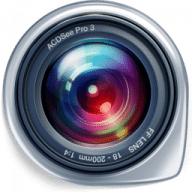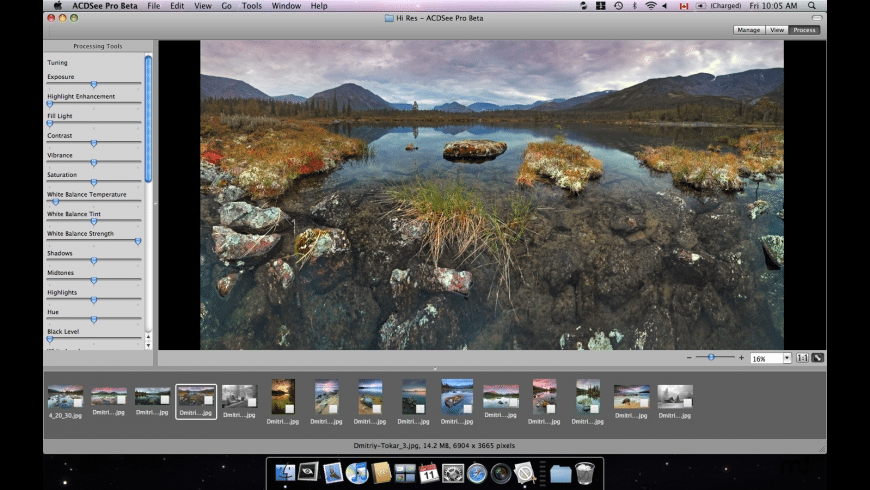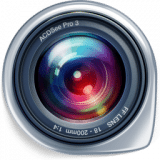Well, ASDSee Pro is finally taking shape. It now has a respectable selection of image adjustment tools, conveniently arrayed in a left-hand side column/pane, in the Process mode. There are two other modes available: The Manage mode has a file browser column/pane on the left of a thumbnail image grid display, and an Organize/Properties column/pane on the right; and the View mode displays the selected image with a film strip thumbnail pane below. These modes imitate two of the modules from Adobe Photoshop Lightroom, splitting the functions of Lightroom's Library module into two separate modes - no doubt to avoid copywriter infringement issues.
Be warned, though, that ACDSee does not handle RAW images well, bogging down with every operation you try to apply. In fact, it cannot handle RAW XMP data at all. So, if you take pictures in RAW, ACDSee Pro is not for you. If you shoot JPEGs or TIFFs it will handle those respectably.
ACDSee Pro has limited metadata editing capabilities, keeping track via a database rather than the image side-car (XMP) file that Lightroom and other RAW image processing apps use. As a result, as with Photoshop, editing is not lossless and you need to save a processed file as a copy if you don't want to overwrite the original when you save the file.
ACDSee does not compete directly with Graphic Converter, which has a different tool set entirely, more like Photoshop lite. Nor will it compete with Aperture or Lightroom since it cannot (at the moment at least) handle RAW files, even though it imitates their editing capabilities to some extent.
Unless RAW image handling capability is added, it's hard to see what niche ADCSee Pro intends to fill. Even iPhoto can handle RAW files - and it comes free with every new Mac. Of course ACDSee has the advantage, in my opinion, of not using a proprietary image catalogue, so that your files may be easily accessed with other applications. Like Graphic Converter and Adobe Bridge, it basically uses the Finder's file system to manage your photos.
Given that OS X has native support for the RAW format, it should not be too difficult to have ADCSee piggyback on that ability. Given the importance of the RAW image format to professional and serious amateur photographers, ACDSee will not deserve the Pro label until it can handle RAW. As it stands, it can be said that it has serious potential; it remains to be seen if that potential will be realized. And then, once it's out of beta, price will determine how widely it is adopted. Under $100, with support for RAW images, ACDSee will be an attractive option. It it costs much more than that, Adobe Lightroom or Apple Aperture will be the better choice.
ACDSee Pro can fill a useful place in the market in that it can edit images in the manner of Aperture, Lightroom and iPhoto but utilizes a Finder-like file management model like Graphic Converter and Bridge. As far as I know, no affordable program fills that niche, accept, perhaps, Photoshop Elements. Though Elements can handle RAW photos using the Adobe RAW plug-in, just as Photoshop does, workflow with the plug-in architecture is not as fluid as in Lightroom and Aperture. So ACDSee can be a unique and useful application - once it develops RAW file support.































